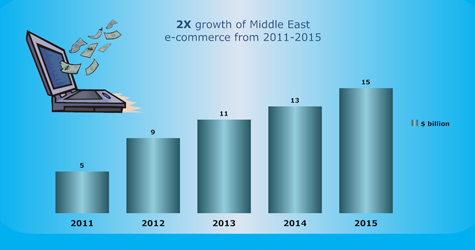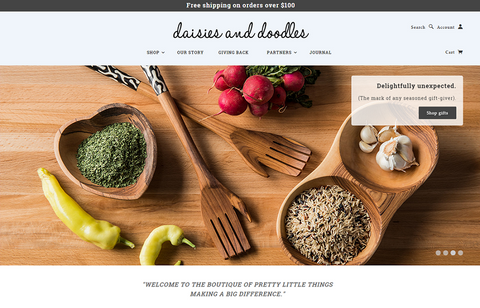In 2015, SaaS (software as a service) ecommerce platforms will upsurge the number of ecommerce store online. This increment in online vendors will result in enhanced competition, and force ecommerce vendors to think about customer retention other than just customer acquisition.
The Rise of Ecommerce
With the intention to sell online, you need to choose an ecommerce platform that will facilitate you to sell your merchandises. In the past, these platforms were costly and need essential technical expertise to implement and run. This created hurdles to entry for those who want to sell their goods online. But in recent times all this has been changed.
The introduction of SaaS based ecommerce platforms has all but now removed all the hurdles to start an online store. Price is no longer a matter. You can get easily start your ecommerce store just for $14 a month. Now you are thinking that you don’t have too technical knowledge? Then, don’t worry: there are lots of great looking themes to create a spectacular website with no technical expertise.
More Vendors More Competition
SaaS based platforms are excellent, they open ecommerce to a more audience that may not have sold online before.
With increased vendors comes increased competition. This increase in competition is going to change how ecommerce vendors do business. In 2015 we will see a decrease in traditional online advertising and a switch to customer retention.
Here’s why.
In the past it was common practice (and it still is, to a lesser extent) to just purchase social media ads and Google AdWords and get as much traffic as possible. Vendors did not look at their conversion or repeat purchase rates as the price per click (or impression) was so low-priced.
At the moment, online marketers are looking for replacements to these forms of advertising as they are becoming less effective and more expensive. The increase in price for these ads is driven by increase in stores doing business online. The more people want those ads the more vendors end up paying for them. Since 2012, average cost per click has been on the rise while average position is falling. That means sellers are getting less while paying more.
Social media ads are not faring much superior. The days of free advertising on social media are just about in the rear view mirror, as organic reach on social media is decreasing, forcing retailers to pay for promoted ads.
For instance, let’s look at 2 popular social media sites. On Facebook, if you post a message to your followers on your business page Facebook says it will reach 16% of your followers if it is not endorsed. Many estimation that this organic reach is actually even lower, AdAge determined that Facebook organic reach is actually closer to 6%.
Twitter is comparable in its organic reach, it is estimated that 71% of impulsive tweets are ignored and only 23% generate a reply as per Wix’s social report. This means that social networks, as well as AdWords, are costing retailers more to bring in less traffic. That is why in 2015 old-style online advertising will drop and customer retention will take its place.
Enter Customer Retention
With customer acquisition less effective and getting pricier, online retailers seeking new methods to keep their website popular and profitable. Many of these vendors are realizing that if they can't acquire new customers cost-effectively, they will need to make the customers they previously have more lucrative.
Retailers can do this by implementing a customer retention approach. But how do you start a customer retention strategy? There are many customer retention tools accessible, but the 2 most popular are the following:-
1) Targeted Email campaigns
These are not the mass email campaigns that were performed in the past. For a customer to come back and buy from you again, they need to see that you care about them personally and are not just “spamming” them.
Targeted email campaigns use the customer's first name, are triggered by specific events, and can even use prior purchasing information to recommend new products in the future. A great example of targeted email for ecommerce is dotmailer. Tailored email marketing give your customers a personalized reason to come back and buy from you again.
2) Loyalty Programs
The second popular method of implementing customer retention is a loyalty/rewards program. These are great for retention because they not only encourage customers to come back, they can be used to encourage other profitable actions such as referring friends.
When shoppers are given points they are essentially given money that can be used on a future purchase. This gives them a reason to return because there is now a switching cost associated with choosing another. Once shoppers see value in these points, you can begin to use them to motivate other actions such as referring friends, sharing on social media, or registering for a newsletter.
Loyalty programs have been helping offline retailers for years, in fact nine of the top 10 retailers in the United States have some form of program in place. The online world is a decade or two behind but is starting to adopt many tactics that have been successful in the past such as a loyalty program.
The Rise of Ecommerce is changing the Online Landscape
SaaS based ecommerce platforms are making doing business online simple and achievable for everybody. Regrettably, it does mean things are more competitive for online retailers.
2015 will be the year that selling online becomes the standard, and the year that vendors begin to take customer retention seriously.













